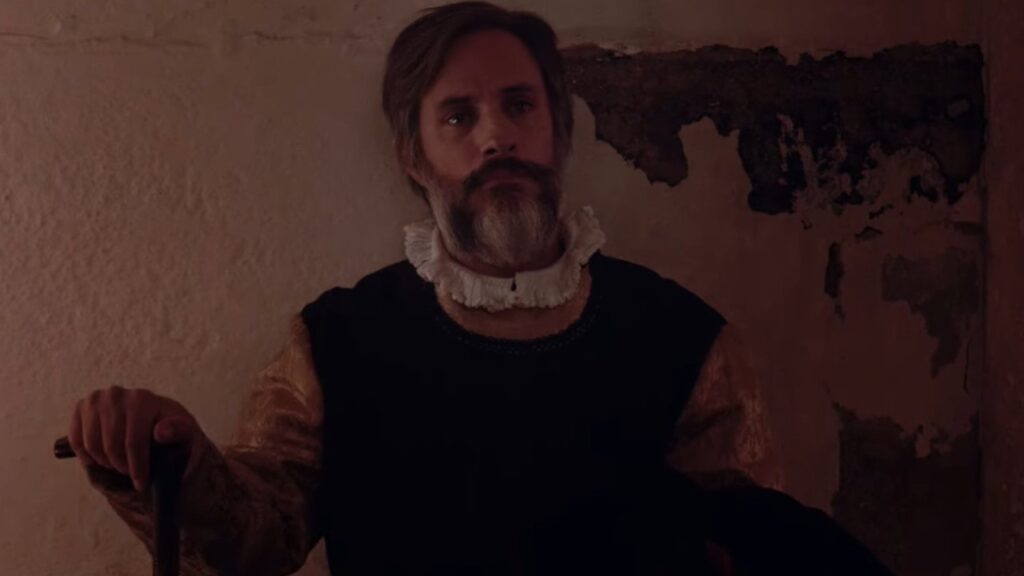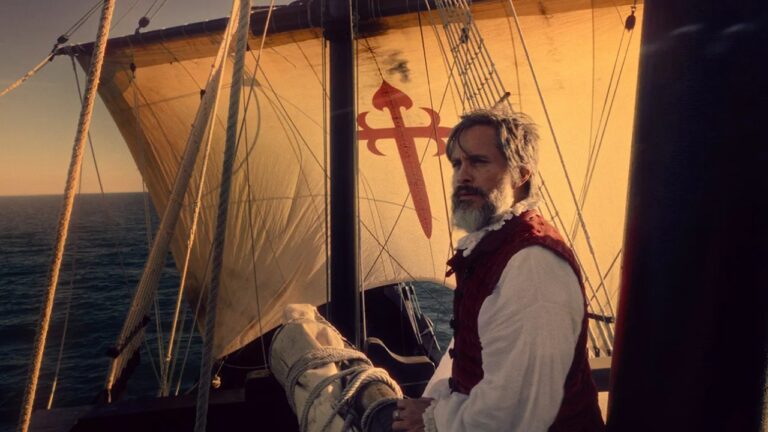Audiences who are familiar with Lav Diaz’s work know that he isn’t exactly known for breezy runtimes. So when we are handed a 160-minute film from the guy who once made a 10-hour epic, we immediately notice the shift. The movie Magellan feels like as if Diaz himself is inviting us into his world with a film that’s still meditative and uncompromising.
And everyone knows that it stands out as his first movie that isn’t in Tagalog, with Gael García Bernal stepping into the role of Ferdinand Magellan, the famed historical Portuguese explorer whose legacy tends to be wrapped in grand myths rather than grounded truths.
The Film Breaks Accuracy on Purpose to Reveal a Deeper Truth

Viewers are shown right away that this isn’t the kind of historical drama that romanticizes conquest, as the opening throws us into Malacca in 1504, where an Indigenous woman encounters a strange white man. And her terrified scream instantly tells us what is coming. Instead of flashy battle scenes, we see how Diaz keeps pulling us back to the aftermath, which is quiet, brutal, and stripped of heroism.
From there, we see and follow through Magellan for the next fifteen years of his career, watching his ambitions grow darker. We find out that Diaz isn’t obsessed with perfect timelines or textbook accuracy. Instead, the film keeps circling back through repeated setups. The shifts in perspective, tightening moods, and a steady unfolding nature of the explorer’s morality. It’s shown that Enrique, who is a Malaysian slave Magellan purchases and turns into his interpreter, becomes an emotional counterpoint. His fractured identity, even after gaining his freedom, highlights the personal cost hidden behind the “Age of Discovery.”
Back in Portugal, audiences see how Magellan woo Beatriz, the woman who nurses him back to health. She marries him and then ends up waiting endlessly as he commits himself fully to the sea (Those who know Ussop’s backstory from One Piece can relate). The film lets her stand in for all the women left behind by colonial ambition, widowed in every way but legally.
The Famous Battle is nothing like the Heroic Version we are Told

And by the time things were getting better, we see how Magellan’s voyage was turning into outright cruelty. Mutinies erupt, men die, and sleepless nights drag the crew into madness. When the fleet finally reaches Cebu, the mood lifts briefly. We see how Enrique translates, alliances form, and conversions begin. But that is only till Magellan chooses to burn local spiritual icons, creating a fury and full-blown havoc that he badly misreads.
We discover that the legendary showdown with Lapu-Lapu isn’t the heroic moment history books like to dramatize. The film shows us a version of Magellan who is tired, stumbling while trying to walk straight into a trap set not by a mythical warrior but by Raja Humabon himself. Enrique, in the final voice-over, reveals he helped orchestrate the massacre to reclaim his freedom by leaving us and all the other audiences with a version of history that feels far more human and unsettling in nature, one that people cannot stop talking about.
You may also like: Five Guillermo del Toro Films That Changed How We See Monsters, Through Friendship And Film In Mikhaïl Vartanov’s ‘Parajanov: The Last Spring’




